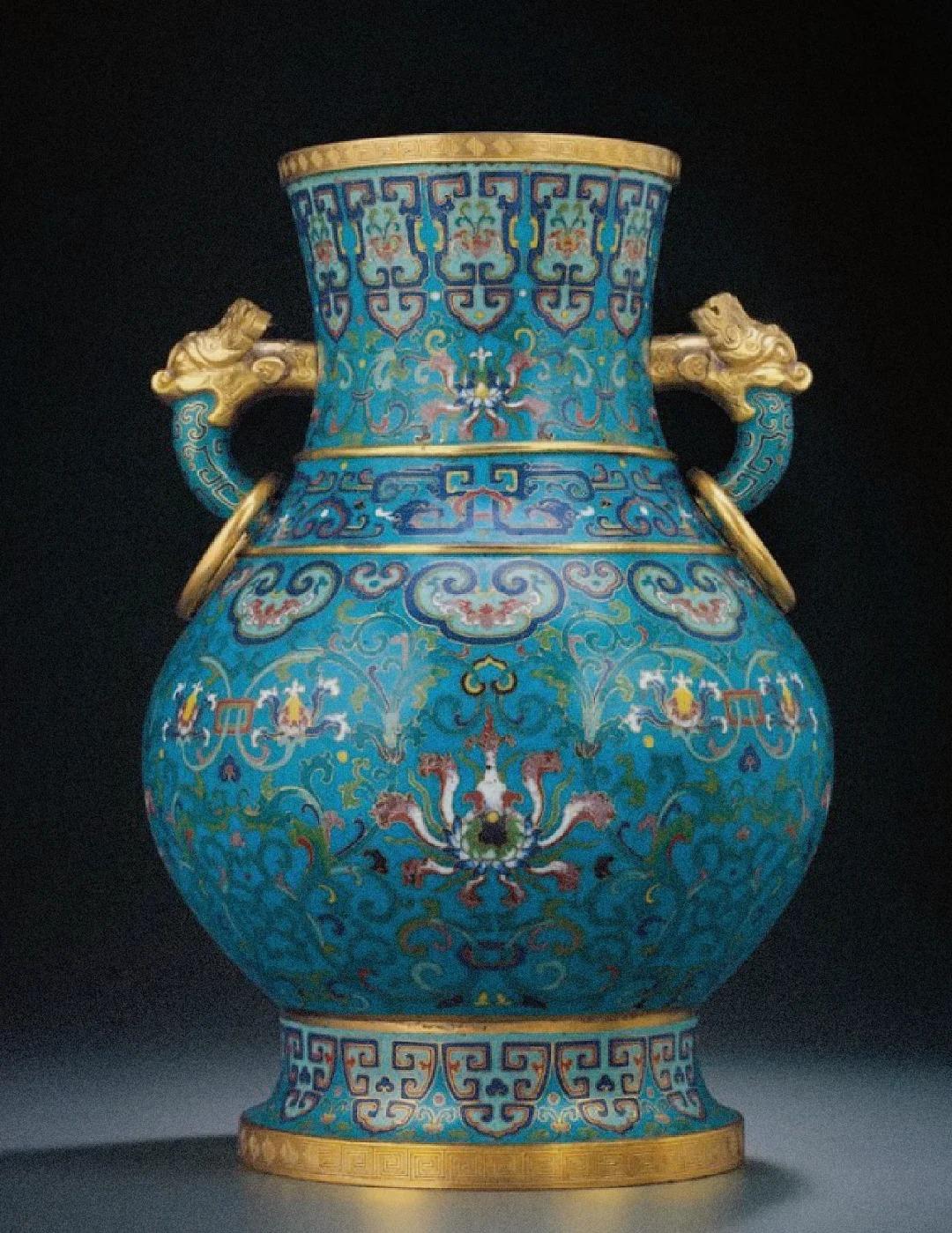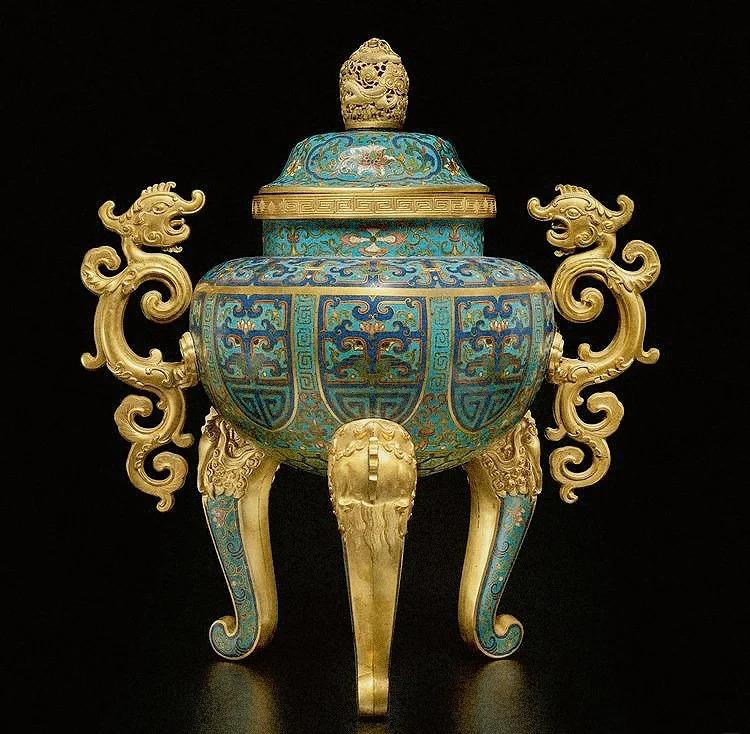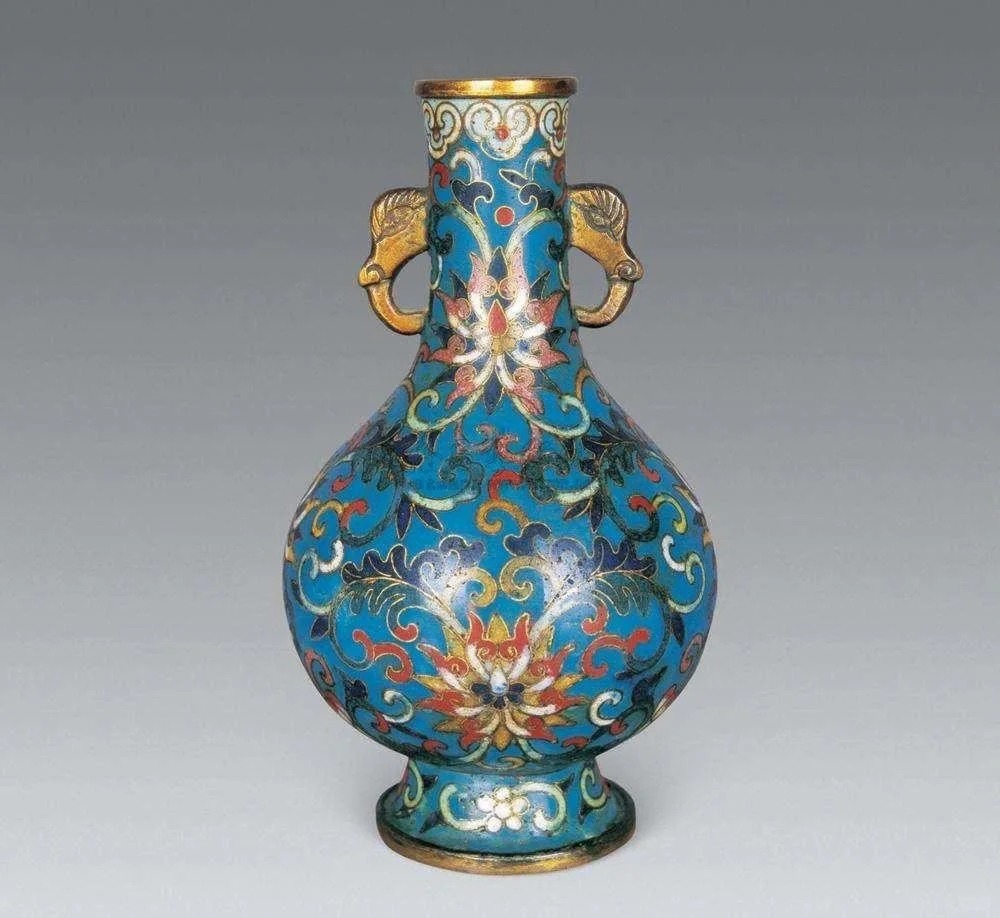Introduction to Chinese Cloisonné
Cloisonné, known as “jingtailan” (景泰蓝) in Chinese, is a captivating art form that combines metalwork and enameling. This intricate technique produces stunning decorative objects that have been prized in China for centuries. Originating in the Yuan Dynasty (1271-1368), cloisonné quickly became a symbol of imperial luxury and artistic mastery.
The art of cloisonné represents the pinnacle of Chinese craftsmanship, blending meticulous attention to detail with vibrant colors and symbolic designs. Its significance extends beyond mere decoration, embodying cultural values, spiritual beliefs, and historical narratives.

The Art of Cloisonné: Technique and Process
The creation of cloisonné is a complex process that requires skill, patience, and artistic vision. Here’s a simplified overview of the steps involved:
- Base Formation: A copper base is shaped into the desired form.
- Wire Application: Thin copper wires are bent and adhered to the base, creating cell-like compartments (cloisons).
- Enamel Filling: Colored enamel paste is carefully applied to fill the compartments.
- Firing: The piece is fired in a kiln at high temperatures to melt and set the enamel.
- Polishing: After cooling, the surface is polished to achieve a smooth, lustrous finish.
This process may be repeated several times to achieve the desired depth and brilliance of color.

Historical Development of Chinese Cloisonné
| Dynasty | Period | Key Developments |
|---|---|---|
| Yuan | 1271-1368 | Introduction of cloisonné technique to China |
| Ming | 1368-1644 | Refinement of techniques, imperial patronage |
| Qing | 1644-1911 | Golden age, peak of artistic and technical mastery |
During the Ming and Qing dynasties, cloisonné production flourished under imperial patronage. Artisans developed increasingly sophisticated techniques, experimenting with color palettes and intricate designs.
Distinctive Features and Designs
Chinese cloisonné is characterized by:
- Motifs: Dragons, phoenixes, floral patterns, and landscapes
- Colors: Rich blues, vibrant reds, and gold accents
- Forms: Vases, bowls, incense burners, and decorative panels
Each piece often tells a story or conveys auspicious meanings through its imagery and symbolism.

Famous Cloisonné Works and Collections
Some of the most impressive cloisonné pieces can be found in:
- The Palace Museum, Beijing: Home to imperial cloisonné collections
- National Museum of China, Beijing: Showcasing historical development
- Shanghai Museum: Featuring exquisite Ming and Qing dynasty pieces
Notable works include the “Great Cloisonné Vase” from the Qianlong period, a masterpiece of technical and artistic achievement.

Cloisonné in Modern China
Today, Beijing remains the center of cloisonné production in China. While traditional techniques are preserved, contemporary artists are pushing boundaries, incorporating new designs and even functional elements into their work.
Modern cloisonné plays a crucial role in preserving China’s cultural heritage, serving as a link between ancient craftsmanship and contemporary artistic expression.

Traveler’s Guide to Chinese Cloisonné
For travelers eager to explore the world of Chinese cloisonné:
- Where to see cloisonné:
- Beijing Enamel Factory: Offers tours and demonstrations
- Guozijian Street, Beijing: Home to numerous cloisonné shops
- Yu Garden, Shanghai: Features cloisonné among traditional crafts
- Tips for purchasing:
- Look for pieces with smooth surfaces and vibrant colors
- Check for the “Made in China” mark on authentic pieces
- Be prepared to invest – quality cloisonné is rarely cheap
- Workshops and experiences:
- Many factories in Beijing offer hands-on workshops
- The Cloisonné Art Museum in Beijing provides in-depth tours
- Packing and transporting:
- Use bubble wrap and sturdy boxes for protection
- Consider hand-carrying small, valuable pieces
- Declare purchases at customs to avoid issues
As you explore the fascinating world of Chinese cloisonné, remember that each piece represents hours of painstaking work and centuries of artistic tradition. Whether you’re admiring the imperial collections in Beijing’s Palace Museum or trying your hand at enamel application in a workshop, you’re connecting with a uniquely Chinese art form that continues to captivate and inspire.
For the curious traveler, Chinese cloisonné offers a window into the country’s artistic soul. As you hold a piece of cloisonné, feel the smooth surface and marvel at the intricate designs, you’re not just holding a decorative object – you’re holding a piece of Chinese history, culture, and artistic innovation. Let the brilliant colors and delicate patterns of cloisonné guide you deeper into your appreciation of China’s rich cultural tapestry.





